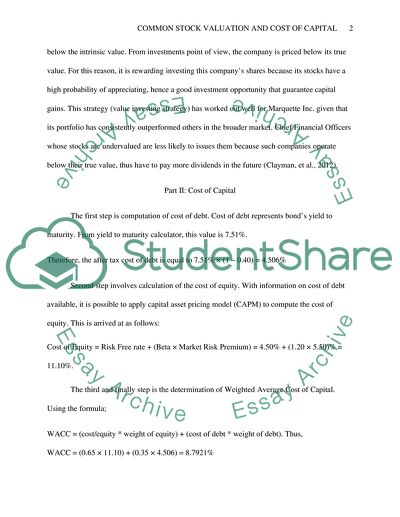Common Stock Valuation and Cost of Capital Case Study - 1. Retrieved from https://studentshare.org/finance-accounting/1652727-case-study-2
Common Stock Valuation and Cost of Capital Case Study - 1. https://studentshare.org/finance-accounting/1652727-case-study-2.


